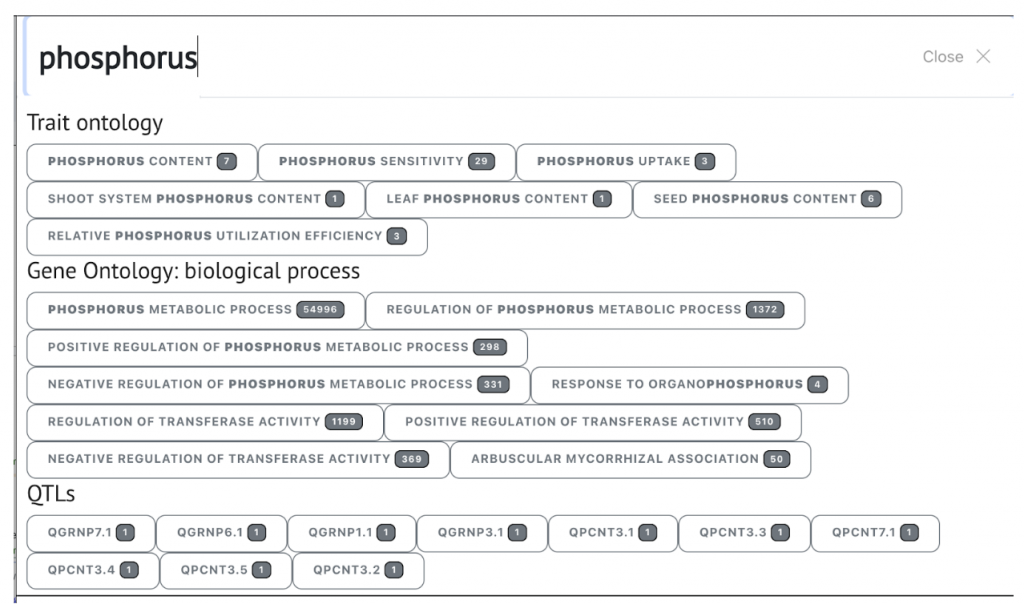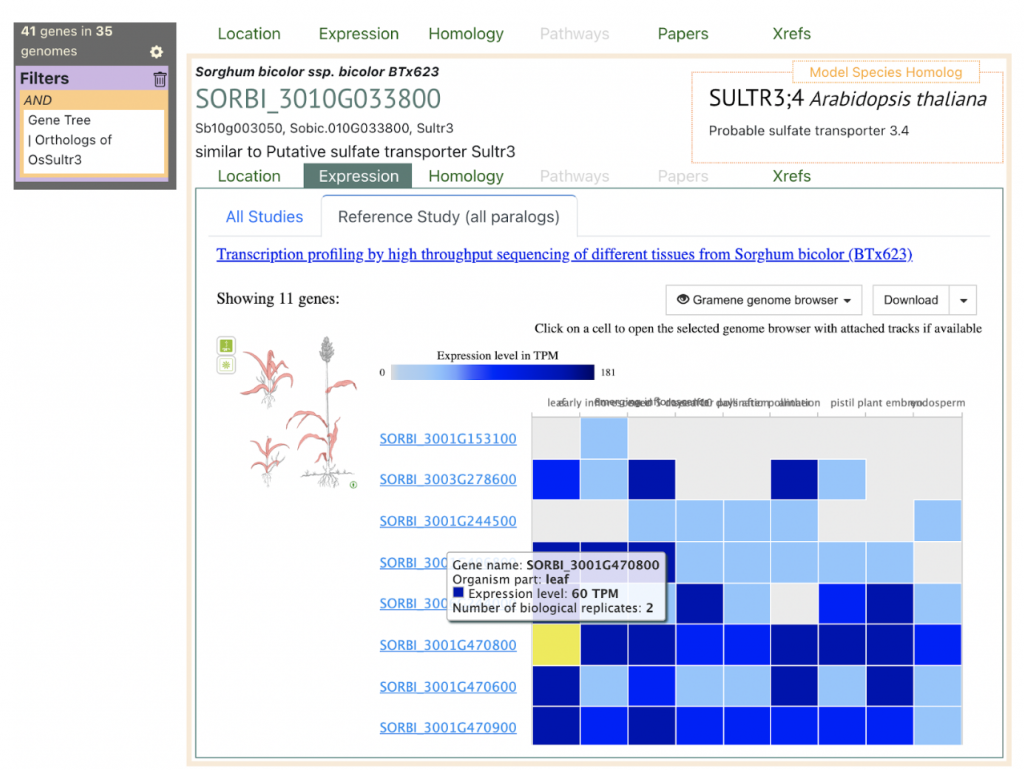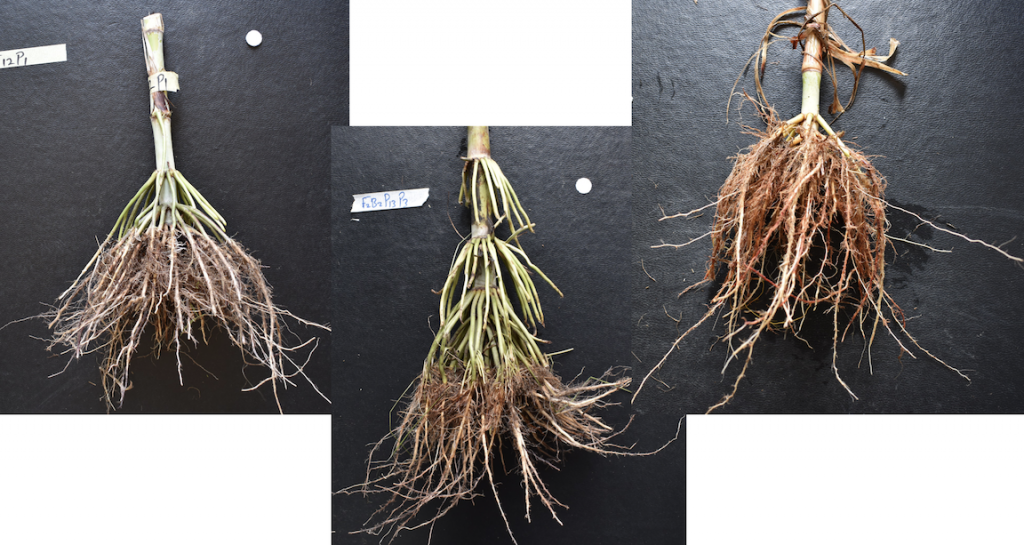Unlocking the Potential of Sorghum in Africa: Insights from Phosphorus-Responsive Root Systems
Africa has the greatest production and consumption of sorghum, but the lowest grain yield. Sorghum in Africa is predominantly grown in areas where the soil is Phosphorous (P) deficient (Gemenet et al. 2016). Additionally, Africa has the lowest use of P fertilizer in the world due to insufficient access. Improving the acquisition and use of natural soil P would likely increase yields in African sorghum. Changes in root system architecture (RSA) are some of the most significant responses in plants to levels of P in the soil. Scientists from the University of Cape Coast and the University of the West Indies explored the root systems, responses, trait relationships and plasticity of two sorghum genotypes (Naga Red and Naga White) found in agricultural fields in Ghana. Both sorghum varieties were grown in greenhouse pots in five external P concentrations (0, 100, 200, 300, and 400 mg P kg-1) and data were collected at the five-leaf and growing point differentiation (GPD) developmental stages. Ghana soil from the coastal savannah was used in the experiments. All of the sorghum plants responded to the external P and formed rhizosheaths indicating that both types of juvenile sorghum plants are responsive to adding P-fertilizer. Both genotypes of sorghum were similar in most of the traits that were recorded; however, the Naga Red sorghum had significantly higher total root lengths (TRL) and lateral root lengths (LRL); they were nearly 30% longer than that of the Naga White at the five-leaf growth stage. For both the Naga Red and Naga White sorghum the responses and plasticity of the root system traits “were more prominent, positive, and linear at the five-leaf stage than at the GPD growth stage.” At the five-leaf growth stage, as external P was increased, TRL increased approximately 2.5 fold when compared with the control group that did not have P added to the soil. However, at the GPD stage TPL decreased by about 1.83 fold when compared with the control group. This finding suggests that although early root biomass production is proportionate with soil P, the demand for P significantly increases after 14 days post-planting, possibly for rapid root and canopy expansion. Additionally, sorghum grown under low-P conditions had almost 35% greater root hair density (RHD) than those grown in high P soil. This was found more significantly in the red line than the white line. RHD was weakly correlated with rhizosheath weight. Conversely, adding external P did not significantly lengthen root hairs. This suggests that the propagation of root hairs (shown in RHD) is more affected by the available P in the soil than the RHL. This effect is greater at the earlier developmental stage (five-leaf growth stage). The authors conclude that they saw the most benefit to the sorghum plants in early development when there was 200-300 mg P kg-1 soil. As development of the plant progresses greater amounts of P may be necessary to maintain the benefits seen earlier in development.
SorghumBase Examples:




Our study unveils the impact of phosphorus fertilizer on two important sorghum genotypes in Ghana and perhaps other places. We unravel some of the dynamics of root system architecture in sorghum—a vital yet underutilized staple for millions of people in sub-Saharan Africa. In these regions, where the tropical soils are often impoverished in phosphorus, we shed light on the intricate interplay between genetics and environment, opening up the discussion of how sorghum roots can be exploited to improve the crop’s performance under phosphorus limitation and pave the way for a more resilient future production. – M. O. Adu
References:
Adu MO, Zigah N, Yawson DO, Amoah KK, Afutu E, Atiah K, Darkwa AA, Asare PA. Plasticity of root hair and rhizosheath traits and their relationship to phosphorus uptake in sorghum. Plant Direct. 2023 Aug 23;7(8):e521. PMID: 37638231. doi: 10.1002/pld3.521. Read more
Gemenet DC, Leiser WL, Beggi F, Herrmann LH, Vadez V, Rattunde HF, Weltzien E, Hash CT, Buerkert A, Haussmann BI. Overcoming Phosphorus Deficiency in West African Pearl Millet and Sorghum Production Systems: Promising Options for Crop Improvement. Front Plant Sci. 2016 Sep 23;7:1389. PMID: 27721815. doi: 10.3389/fpls.2016.01389.




